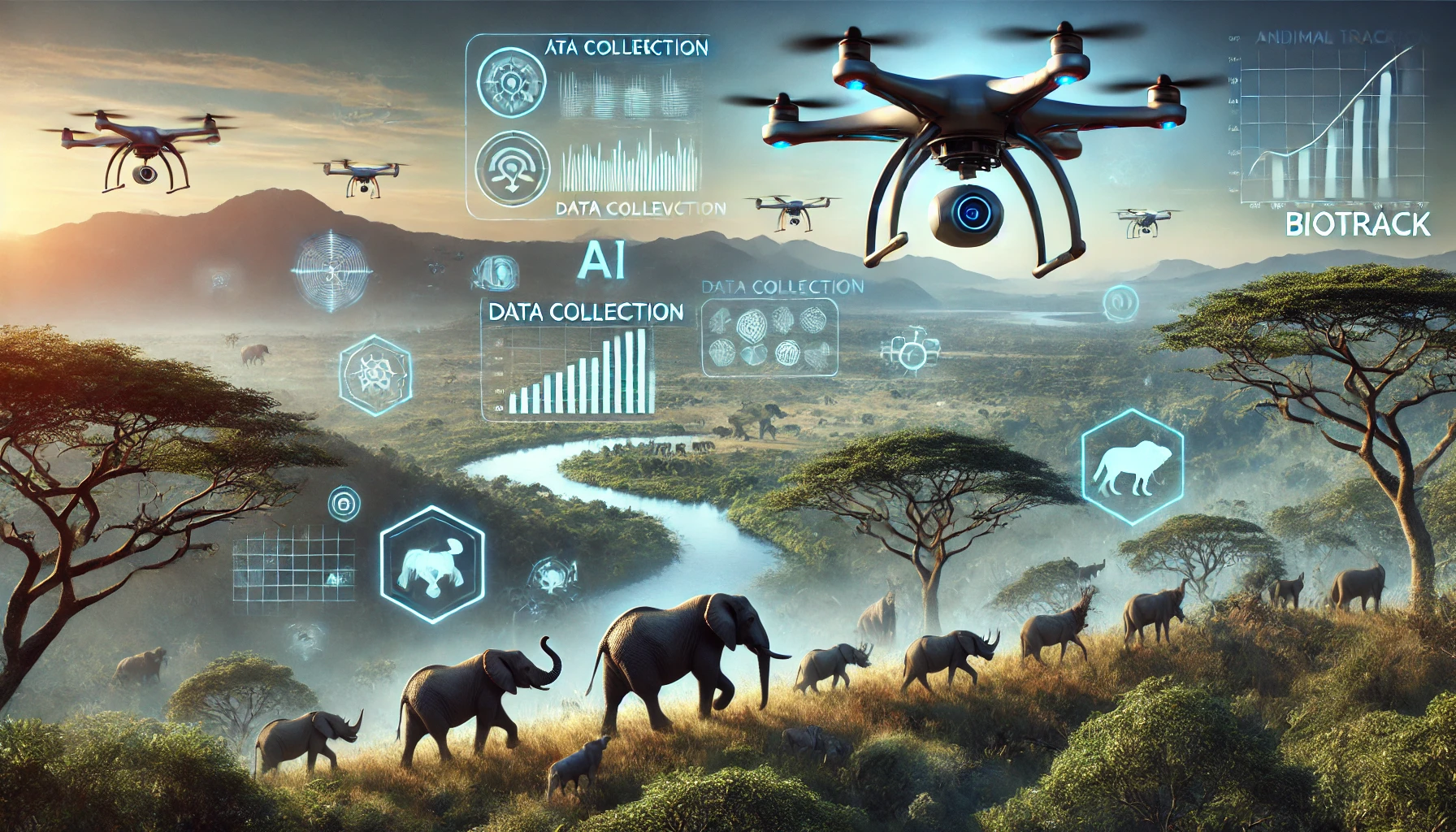BioTrack: Revolutionizing Wildlife Conservation with AI and Drones

Introduction
In an era where biodiversity is declining at alarming rates, wildlife conservation has become an urgent global priority. Innovative tools like BioTrack, which combines artificial intelligence (AI) and drone technology, are stepping up to confront the challenges of poaching, habitat destruction, and endangered species management. BioTrack’s mission isn’t just about monitoring; it’s a revolutionary approach to wildlife protection, leveraging real-time data to anticipate threats, analyze animal behavior, and enforce anti-poaching laws with precision. This article will explore how BioTrack is changing the landscape of conservation by diving into its origins, challenges, and what the future holds for this high-tech guardian of the wild.
Historical Context: The Evolution of Wildlife Conservation
Efforts to protect wildlife began with early conservationists like John Muir, who championed the protection of forests and animals in the 19th century. Yet as industrialization spread, so did threats to ecosystems. By the 1970s, deforestation, pollution, and illegal hunting had accelerated species decline, prompting governments and NGOs to establish protected areas and anti-poaching initiatives. However, traditional methods such as patrols and camera traps were limited in scope, often falling short of real-time monitoring and data collection. The introduction of satellite imagery in the late 20th century marked a pivotal shift, allowing researchers to track species on a larger scale. Today, BioTrack represents the next leap, using drones and AI to enhance these early efforts and make wildlife protection more responsive and effective than ever before.
Current Challenges in Wildlife Conservation
Despite advancements, wildlife conservation faces major hurdles. Poaching remains a pressing issue, with species like elephants, rhinos, and pangolins targeted for their tusks, horns, and scales. Additionally, habitat fragmentation from urbanization and agriculture threatens animal populations by isolating them in small, disconnected areas. Climate change is exacerbating these issues, driving species to migrate or adapt faster than ever. Funding constraints and the limited capacity of park rangers further complicate the situation. Here, BioTrack leverages AI and drone technology to address these challenges head-on. By deploying drones equipped with high-resolution cameras and thermal imaging, BioTrack provides round-the-clock surveillance of protected areas, enhancing rangers’ ability to intervene promptly in suspicious activities and reduce poaching incidents.
Case Studies: BioTrack in Action
BioTrack has already demonstrated tangible success stories around the world. In Kenya’s Maasai Mara National Reserve, drones have drastically reduced poaching by providing aerial surveillance, enabling rangers to identify and approach poachers before they strike. In addition to detecting illegal activities, BioTrack’s AI algorithms analyze migration patterns, ensuring that wildlife corridors remain open for species like elephants, which require large territories for survival. Another example is found in Nepal, where BioTrack’s combination of drones and AI helps protect endangered one-horned rhinoceroses by monitoring their movements and alerting rangers to unusual behavior, a potential indicator of distress. In Australia, BioTrack has been instrumental in detecting bushfires early, giving authorities crucial minutes to evacuate and protect both wildlife and habitats. These cases underscore how BioTrack’s AI-driven insights and aerial monitoring create a powerful shield against various threats to wildlife.
Solutions and Best Practices for Effective Conservation
The success of BioTrack underscores the importance of collaborative efforts in wildlife conservation. Governments, NGOs, and private sector stakeholders must work together to support conservation programs financially and operationally. BioTrack’s approach highlights best practices such as ranger training in drone operation and AI analytics, improving response times and monitoring effectiveness. Partnerships with local communities also play a critical role, as local knowledge can guide technology placement and threat identification. For example, involving Maasai communities in Kenya has provided BioTrack’s team with insights into poaching hotspots and migration routes, strengthening conservation strategies. Beyond partnerships, data-sharing initiatives between countries allow conservationists to track migratory species across borders, making a united stand against global biodiversity loss possible.
Future Implications: The Next Frontier of AI in Conservation
Looking ahead, the integration of AI and drones in wildlife conservation is likely to expand significantly. BioTrack is already exploring the use of machine learning to predict poaching patterns based on past data, allowing conservationists to proactively address threats. As drone technology becomes more advanced, drones may eventually be equipped with facial recognition software to identify individual animals, enhancing our understanding of behaviors and relationships within species groups. Moreover, AI-driven genetic analysis could potentially aid in breeding programs for endangered species, strengthening population numbers and diversity. Another exciting area of future exploration is combining BioTrack with satellite data to monitor remote or inaccessible regions where endangered species reside. These advances are not just technical feats—they represent hope for endangered species worldwide.
Conclusion: Why BioTrack Matters for Our Planet
BioTrack is not just another technology; it’s a symbol of hope in the fight to save our planet’s biodiversity. By merging AI, drones, and data analytics, BioTrack offers a potent solution to some of conservation’s toughest challenges. This innovative approach highlights the essential role of technology in preserving wildlife for future generations. BioTrack’s initiatives serve as a beacon, encouraging other conservation projects to embrace the advantages of AI and drone surveillance. As we witness the transformative impact of BioTrack in protecting endangered species and deterring illegal activities, it becomes clear that the future of conservation lies in a harmonious balance between nature and cutting-edge technology.
Call to Action
How do you see technology shaping the future of conservation? Join the discussion on Reddit or Twitter and share your thoughts!



